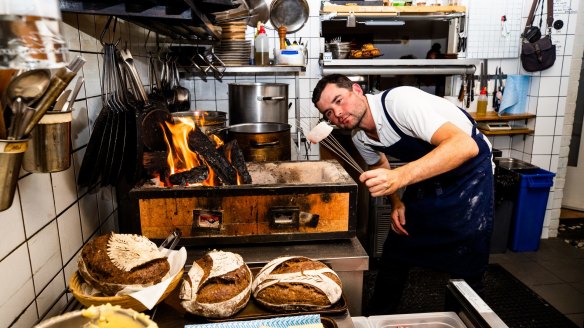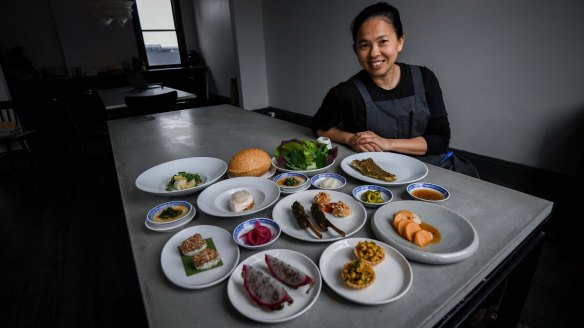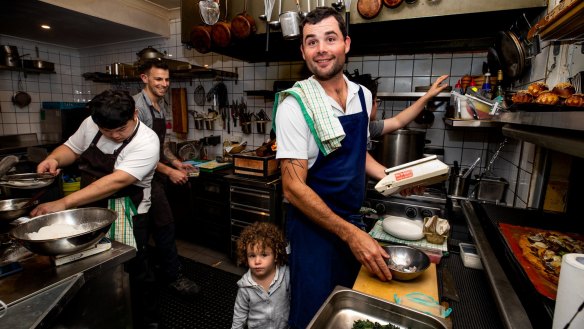Spoiled by lack of choice: the restaurant tasting menu takes off post-COVID

Neil Perry called it first. And if not first, at least loudest, stating with the closure of his original Rockpool in Sydney five years ago that hours-long, course-by-course tasting menus were done.
A la carte dining was where it was at, he said, opening Eleven Bridge with a menu where (gasp) guests got to choose what they ate, then pay for it. Eleven Bridge didn't last, but where Perry led others followed.
Take a spin around the country's biggest restaurant openings of the past 18 months, and a la carte is the name of the game: Woodcut at the Crown; Gimlet at Cavendish House; Mimi's by Merivale; the upcoming Society by the Lucas Group.

Look to Sydney and Melbourne's smaller restaurants, though, and it's a very different story.
Since COVID-19, Thi Le, owner-chef at Anchovy in Richmond, has evolved her menu from something to please all comers to something more personal. "Anchovy had always had south-east Asian vibes, but now it's much more focused on Vietnamese," she says, with the change having stemmed from conversations with her mum during lockdown.
"The more we talked I came to the realisation that I wanted to look a little bit deeper into my own heritage."

Le mentions a snack of stir-fried corn served in a duck-fat tart shell that plays on the Vietnamese street dish bap xao mo hanh. In the past customers might have overlooked it. Now, with a set menu, she serves it to everyone, then delves into its background. The feedback, she says, has been overwhelmingly positive.
"People say this is the first time they've seen a chef who owns the restaurant cooking the food, serving the food, then having the time to have a chat," she says. "We're attracting a new crowd, but the old crowd, they think this is the best cooking I've ever done."
Ask around, and the theme is consistent. At Sunda, in Melbourne's CBD, Khanh Nguyen has nixed the a la carte, instead opting for two tasting menus, one serving classics for $98, the other a mix of old and new for $168. He says the result is closer to what he had always wanted to offer, but it took a pandemic to get there. "It gave us the reason to think about what we wanted to do and we just finally took that leap."
For others, the change might have come earlier, but the reward was still the best cooking they've done. Helen Diab and David Coumont run Moxhe in Bronte, a neighbourhood spot driven by seasonal seafood. They used to offer both a la carte and set menus, but in 2019 made the switch. They now run four courses for $59, eight for $99 and a longer, deeper "Ocean Current" menu on Saturdays for $145.
"The idea behind the change was offering a better experience for better value," they say. "We control the speed of the service better, the consistency, the costs. We're also more free in terms of creativity – having a set menu gives you the opportunity to create an experience with a beginning and an end."
Closer to the city, Tristan Rosier runs the kitchen at Arthur, which has served a tasting menu since day one. He and partner Rebecca Fanning cite several reasons: there's the storytelling, but then there's the impact on costs, waste, value and consistency. It also lets a restaurant better predict its outgoings and takings.
"Post-lockdown, we're seeing a lot of restaurants move towards this model as they're needing to guarantee a spend with reduced capacity," says Fanning. "But people are also after experiences, and at a time where there are less ways to spend money, they're getting that through restaurants. With this model, you're able to create that experience because you're streamlining a lot of the processes."
This, perhaps, explains the flurry of omakase restaurant openings in Sydney, or places like Gray & Gray and Luci in Melbourne launching without an a la carte offer. But for many, it's about survival. Sean Moran almost lost his Bondi institution, Sean's Panaroma, during COVID, but clawed things back by switching to a $100 prix-fixe menu. Kepos and Co in Waterloo did similar, but for $55 to attract groups and younger diners.
Nearby, two-hatted Firedoor in Surry Hills is now doing five courses for $140, while Melbourne's Izakaya Den overhauled their entire concept to reopen with an $80 menu with extras around the edges.
For Le, it's about aligning the economics with the vision; there were nights under restrictions when Anchovy might have served 12, and barely covered costs.
"I think the reason why small guys like myself are starting to go for tasting menus is that at the end of the day I'm only serving 30 people versus 250. The big groups, they need to offer everything to everyone, but I might as well get 30 people in and do what I want to do." she says. "For us, if we can get 30 people in every night, that's enough."
A field guide to menu formats in 2021
There are exceptions to every rule, and plenty of crossover, but for a top-line guide to reading the menu, here's where to start.
A la carte
The classic, where dishes are listed in courses or categories with prices to match. These are then chosen by the diner and the total tallied. You know, a menu.
Banquet
Built to share, with the expectation that a few individual starters might come out early, before a series of dishes are spread over the table as they come.
Chef's Menu
The chef's pick from the a la carte menu, chosen to make things more straightforward for the diner and the kitchen, and the experience more streamlined and shareable.
Degustation
A procession of smaller courses – sometimes 20 or more – often seen in haute cuisine. Can be equivalent to set and tasting menus, but typically it might be a step up.
"Feed Me" Menu
This might mean the chef's menu, but it can also mean dealer's choice, with concessions made for diner preferences. A generous restaurant might keep going until you say stop.
Kaiseki
Kaiseki, which has centuries-old roots in Japanese tea ceremonies, is analogous to a degustation, and in many ways its precursor. The most classic of these multi-course meals are highly structured, change seasonally and emphasise visuals.
Omakase
A Japanese format handing freedom to the chef, who'll build a menu based on hyper-seasonal ingredients and the diner's inclinations. Seen in high-end sushi restaurants or those specialising in one discipline, but the scope is wide.
Prix-Fixe
A "fixed-price" menu. Common in French bistros, a prix-fixe most often gives a choice of two or three courses, either with no or just a couple of options in each, for a predetermined price.
Set Menu
Can be equivalent to a tasting menu or degustation, but can also tend toward fewer courses with larger mains preceded by snacks. There may be a bit more choice involved, too.
Tasting Menu
Effectively a degustation, but a tasting menu might imply that things are a little more accessible and affordable, with some larger dishes and a little less fuss.
Restaurant reviews, news and the hottest openings served to your inbox.
Sign up